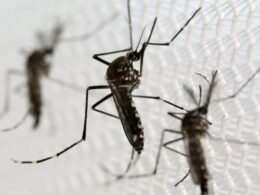the health strategist
knowledge platform
health management strategy, engineering, and technology
for continuous transformation
Joaquim Cardoso MSc.
Chief Research Officer (CSO), Chief Editor
Chief Strategy Officer (CSO) and Senior Advisor
August 2, 2023
What is the message?
Trends in tobacco use have seen a decline in absolute numbers from 1.367 billion in 2000 to 1.298 billion in 2020, according to a 2021 WHO report on trends in tobacco use.
Since 2007, when the MPOWER package was first recommended by WHO, that prevalence has declined by about 10% for both sexes, with a particularly sharp decline in female smokers.
However, coverage for tobacco taxation has grown very slowly over the last 15 years. Only 41 countries worldwide have put in place higher taxes for cigarettes.
Key Takeaways:
- Some 5.6 billion people – 71% of the world’s population – are now covered by at least one tobacco protection policy adopted by their national governments, according to a new World Health Organization (WHO) report published today.
- That is five times more people than were protected in 2007, when the comprehensive set of anti-smoking policies, known as MPOWER, was first recommended by WHO.
- Among those policies, some 40% of people worldwide live in countries that have declared all indoor public places to be smoke-free, according to the new WHO report on the global tobacco epidemic.
- Tobacco smoke is estimated to kill some eight million people worldwide, including 1.3 million non-smokers exposed to dangerous second-hand smoke.
- Trends in tobacco use have seen a decline in absolute numbers from 1.367 billion in 2000 to 1.298 billion in 2020, according to a 2021 WHO report on trends in tobacco use.
- Since 2007, when the MPOWER package was first recommended by WHO, that prevalence has declined by about 10% for both sexes, with a particularly sharp decline in female smokers.
- 2.4 billion in 44 countries remain unprotected by even one MPOWER measure. And as one indicator of the state of play, 53 countries still do not have complete smoking bans in health facilities.
- Despite the progress made since 2007, tobacco is still the leading cause of preventable death in the world and the fight is not over.
- Strikingly, coverage for tobacco taxation has grown very slowly over the last 15 years, the new WHO data shows. Only 41 countries worldwide have put in place higher taxes for cigarettes.
DEEP DIVE

While Anti-Smoking Policies Cover 70% of Global Population, Taxation is Under-Utilised
Elaine Ruth Fletcher
August 2, 2023
Some 5.6 billion people – 71% of the world’s population – are now covered by at least one tobacco protection policy adopted by their national governments, according to a new World Health Organization (WHO) report published today.
That is five times more people than were protected in 2007, when the comprehensive set of anti-smoking policies, known as MPOWER, was first recommended by WHO.
Among those policies, some 40% of people worldwide live in countries that have declared all indoor public places to be smoke-free, according to the new WHO report on the global tobacco epidemic.

Tobacco smoke is estimated to kill some eight million people worldwide, including 1.3 million non-smokers exposed to dangerous second-hand smoke.
Trends in tobacco use have seen a decline in absolute numbers from 1.367 billion in 2000 to 1.298 billion in 2020, according to a 2021 WHO report on trends in tobacco use. Since 2007, when the MPOWER package was first recommended by WHO, that prevalence has declined by about 10% for both sexes, with a particularly sharp decline in female smokers.

“These aren’t just numbers,” said WHO’s Rudiger Krech at an embargoed press briefing last week. “This policy package has literally changed our lives. It means that families can go out to restaurants without worrying about their children breathing secondhand smoke. Our kids aren’t bombarded with tobacco and e-cigarette ads next to their schools. It means that people that once helped to quit smoking can get the support that they need.”
‘Insidious’ tactics
Yet the tobacco industry continues to use a range of “insidious” tactics to exert influence on policymakers, Krech, director of health promotion, warned.
As a result, 2.4 billion in 44 countries remain unprotected by even one MPOWER measure. And as one indicator of the state of play, “53 countries still do not have complete smoking bans in health facilities.”
MPOWER prevented 300 million new smokers
“As you’ve heard, we estimate that more than 70% of the world’s population is now protected with at least one MPOWER tobacco control policy as compared to 15% in 2007,” said Dr Kelly Henning, head of Bloomberg’s public health program, speaking at the press briefing from New York City. “This fivefold increase in protected citizens has prevented an estimated 300 million people from becoming smokers.
She added, however, that, “despite the progress that we’ve made since 2007, tobacco is still the leading cause of preventable death in the world and the fight is not over.”
Only 41 countries, out of 195 WHO member states and observers, have what WHO describes as “complete policies” in tobacco taxation, regarded as one of the most powerful tools available to governments.
The most recent WHO data on smoking prevalence also doesn’t fully take into account smokeless tobacco use, which by all counts is growing – although surveys of e-smoking trends in many countries lag behind.
Lack of strong taxation policies

Strikingly, coverage for tobacco taxation has grown very slowly over the last 15 years, the new WHO data shows. Only 41 countries worldwide have put in place higher taxes for cigarettes – even though such taxes can be a lucrative form of revenue, and useful in supporting government smoking cessation and other related health services.
Since 2007, only 5% more of the world’s population is covered by tax policies that levy stiff taxes on cigarettes today.

Even fewer countries have programmes supporting mass media ads warning of the dangers of smoking and smoking cessation programmes.
While the proportion of people globally able to access smoking cessation measures has increased significantly over the past 15 years, protection against smoking advertisements in the mass media has in fact declined.
Conversely, the measures with the highest amount of country uptake include pack warnings (103 countries) and smoke-free environments for the public (74 countries).
Tobacco lobby is buying up pharma firms
Among the tobacco industry’s suite of tactics, there have been new endeavours to purchase pharma companies “to gain status in health policy circles,” Krech said.
“The tobacco industry recently is making attempts to actually buy medical enterprises to be at the table when it comes to actually looking at the fight against cancers, or other [issues] in the global health sphere, [where we have ] established communications with the industry,” Krech cautioned.
“They tried to, for instance, buy a vaccine company during the recent COVID crisis to actually produce or get into the discussion of producing COVID vaccines which we found very interesting.”
“There are whitewashing tactics where they tried to be part ‘of the solution’,” said Krech. “During the COVID crisis, they offered respirators and gave out masks to people for free.”
Additionally, he said that while a number of tobacco companies have publicly stated that they intend to move out of smoking products altogether “the inverse is true”.
“They just want to hook our children on e-cigarettes and vaping to make them nicotine dependent – and then, of course, they will switch to cigarettes afterwards.”
Slight movement away from tobacco cultivation in Africa
On the plus side, Krech said that there appears to be a slight movement out of tobacco farming in Africa following a 20% increase in tobacco cultivation on the continent over the last 15 years.
“We now see that, as the world faces a food crisis, we need food not tobacco. So, therefore, yes, indeed, we see a slight decrease in dependency on tobacco growing.
“There is actually a move to alternative crops because they see that, you know, growing tobacco is [also] extremely poisonous for farmers and for their kids.”
Originally published at https://healthpolicy-watch.news/












